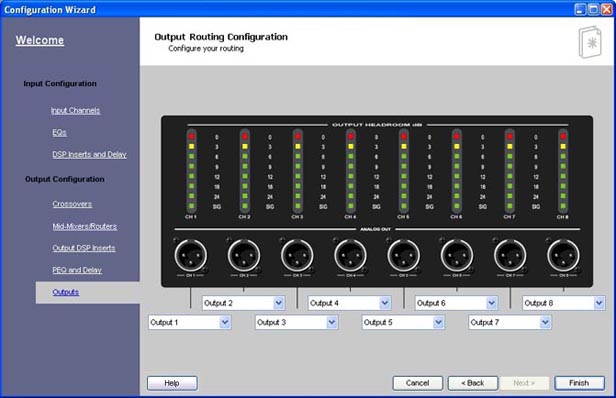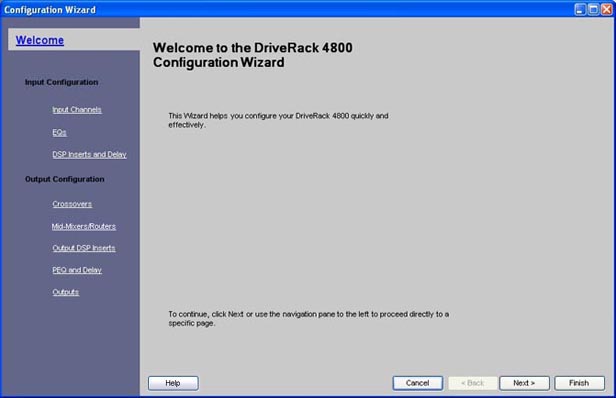
The Configuration Wizard is the starting point that allows users to create a complete loudspeaker system processor.
Many of the functions in the DriveRack 4800/4820 can be linked together providing control of multiple like functions from a single editor. This is called Linking and is done in the configuration of the device. Linking is available in certain pages of the Configuration Wizard. More information on Linking can be found by clicking on the following link: Linking - DR4800/4820
Select from the link options available on the Configuration Wizard menu to the left as seen on the graphic below, or select the Next > button at the bottom of the menu to page through each step of the configuration process.

Configuring of the Input Channels lets you select between an input mixer or router. More information can be found by following this link: Input Router/Mixer - DR4800/4820
The Input Channel configuration page looks like this:
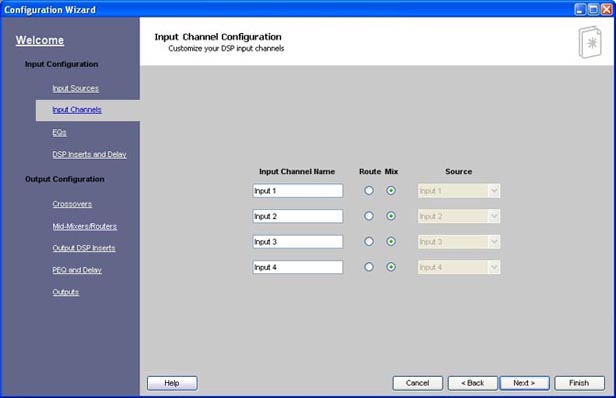
The Input EQ is configured with the Input EQ Configuration page, for more information about configuring the Input EQ click on this link: Input EQ - DR4800/4820
The Input EQ configuration page looks like this:
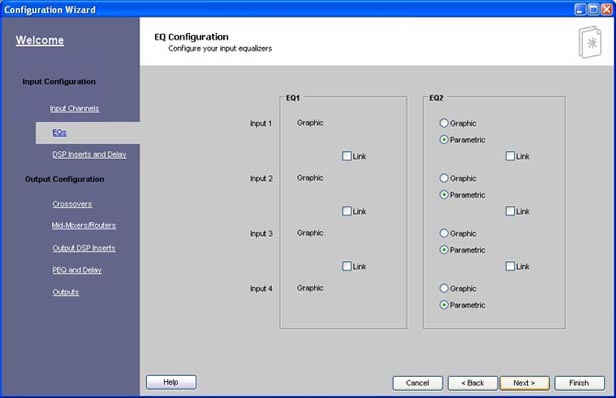
Following the Input EQ is the Input DSP Inserts and Delay configuration page. This page lets you select the DSP inserts you would like to use as well as link them together. Input Delays can also be linked together from this page. For more information regarding the input DSP Inserts, click on the following link: Input DSP Inserts - DR4800/4820
For more information on Input Delays click on the following link: Input Delay - DR4800/4820
The input DSP Insert and Delay page looks like this:
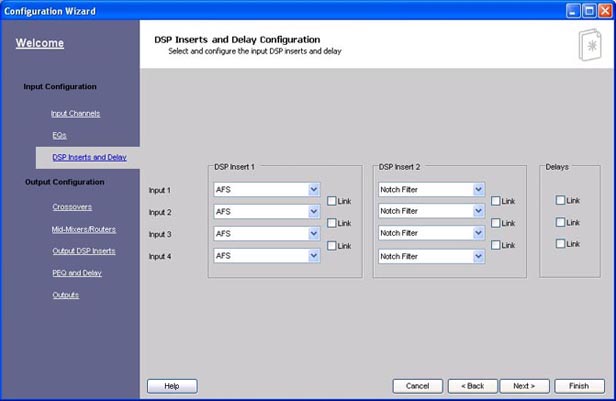
Crossover configuration is the driving factor in the Output Section. The Crossover configuration page lets you create the kind of Crossovers that you need for your application. More on Crossover configuration can be found by clicking on the following link: Output Bandpass Filter/Crossover - DR4800/4820
The Crossover configuration page looks like this:
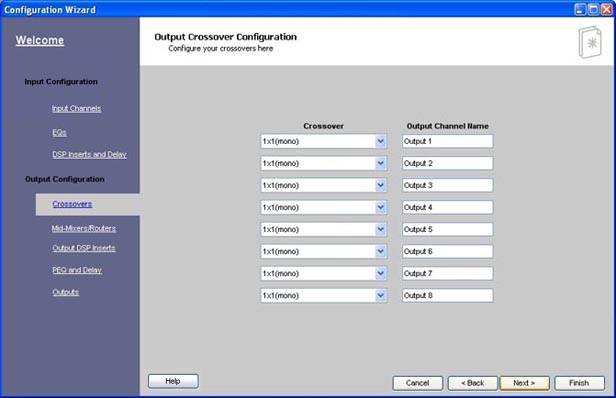
The Mid Mixers/Router configuration page lets you select between the Mixer or Router that is feeding the various Crossovers or Bandpass filters. A Mixer is often the easiest to use, but a Router does allow the use of a ZC wall panel to change the source selected here. More on using the output Router/Mixer can be found by clicking on the following link: Output Router Mixer - DR4800/4820
The Output Mixer/Router configuration page looks like this:
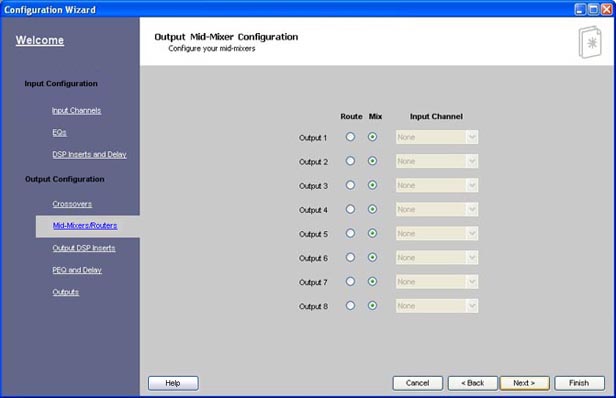
Following the Mid Mixers/Router is the Output DSP Inserts page where you can select which DSP functions will be inserted on the two Output Insert points. For more information about the Output Inserts click the following link: Output DSP Inserts - DR4800/4820
The Output DSP Insert configuration page looks like this:
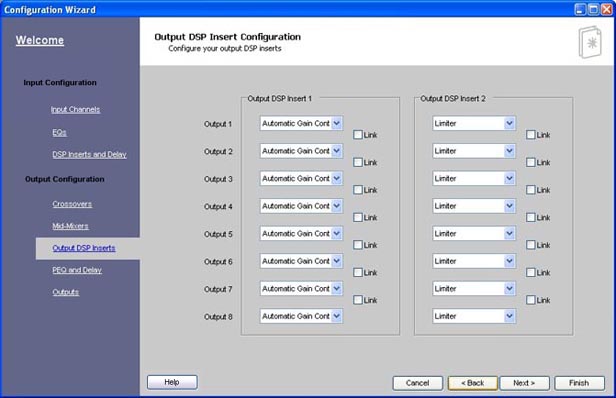
The Output EQ and Delay configuration page lets you link Output EQs and Delays. It also lets you select how much of the total 1.3 Seconds will be available in each of the output Delays. For more information on the Output EQ click this link: Output EQ - DR4800/4820
For more information on the Output Delay click this link: Output Delay - DR4800/4820
The Output EQ and Delay configuration page looks like this:

The final page of the Configuration Wizard is the Output Routing page. This lets you change the output routing based on how you would like signals sent to the analog (and digital) outputs as well as the meters. The meters reflect what is being sent to its physical output. For more information on the Output section click the following link: Output - DR4800/4820
The Output configuration page looks like this:
